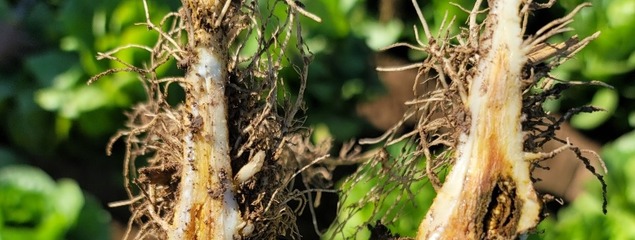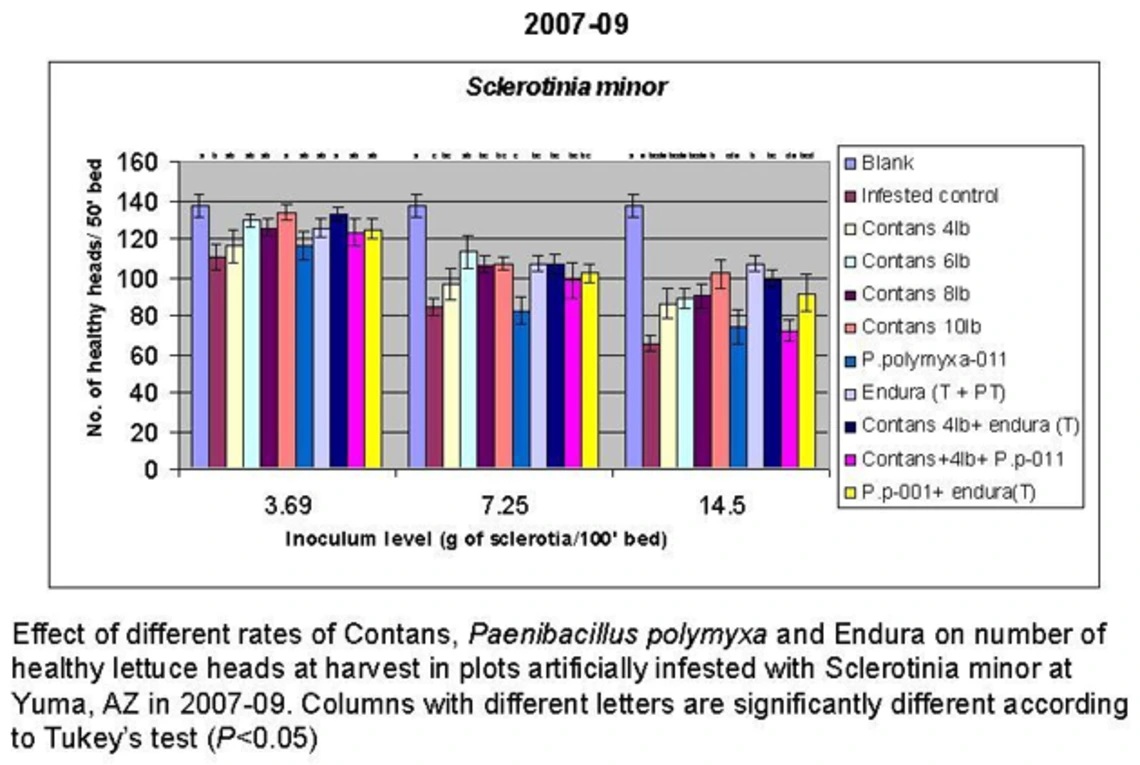
Plant Disease Management
Lettuce Drop
Management Practices
Cultural Control
Cultural control of the disease involves strategies for reducing soil sclerotial populations. Crop rotation to non-hosts can reduce soil populations of sclerotia, but the selection of rotation crop must be carefully selected as both causal agents have wide host ranges. Deep inversion plowing can be used occasionally to move the inoculum deeper into the soil profile. Summer flood solarization has been shown to reduce sclerotial populations in desert production areas. Irrigation management also is effective with drip irrigation resulting in the lowest incidence of disease.
Chemical Control
There are a number of fungicides that are effective against lettuce drop; iprodione, boscolid, dicloran, and others. Most are applied at the rosette stage in banded application targeting the base of the lettuce plant. For control of S. minor, additional applications post-thinning are effective. Before using any product to control lettuce drop, check product labels and restrictions and consult with your local Extension Specialists and Pest Control Advisers.
Biological Control
Considerable research has been conducted on evaluating biological control agents to manage Sclerotinia disease in a number of cropping systems. Trichoderma spp., Sporidesmium sclerotivorum, and Bacillus subtilis have been evaluated against Sclerotinia spp. but have not performed well under field conditions (Chitrampalam et al 2008, Plant Dis. 92:1625-1634).
In striking contrast, Coniothyrium minitans has shown much higher efficacy. Two applications of the recommended rate of C. minitans (Contans) (2lb /acre)one at planting and one at post thinning outperformed commonly used chemical fungicide Rovral (Iprodione) for controlling lettuce drop caused by S. sclerotiorum. However, C. minitans had less effect on S. minor (Chitrampalam et al 2008, Plant Dis. 92:1625-1634).

Studies were continued to develop a biocontrol strategy mainly with Coniothyrium minitans to manage lettuce drop caused by S. minor in lettuce production areas of both Yuma County, AZ and Imperial Co, CA. Results from this study revealed that lettuce drop caused by S. minor could also be successfully managed with Coniothyrium minitans in a desert agroecosystem. However, the rate of application of C. minitans required to manage S. minor was much higher than that required to control S. sclerotiorum (2lb/acre).

Effect of different rates of Contans, Paenibacillus polymyxa and Endura on number of healthy lettuce heads at harvest in plots artificially infested with Sclerotinia minor at Yuma, AZ in 2007-09. Columns with different letters are significantly different according to Tukey's test (P<0.05)

